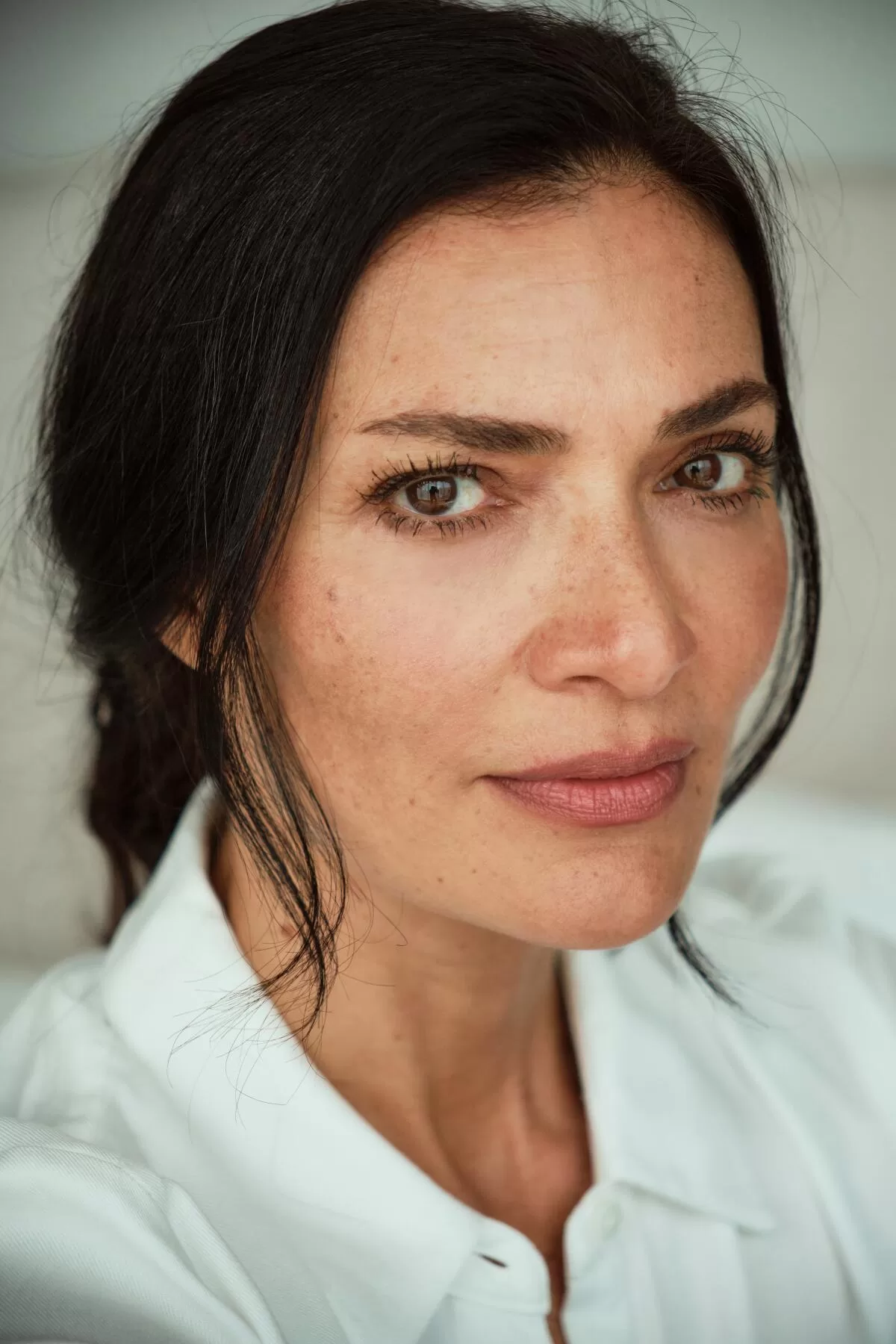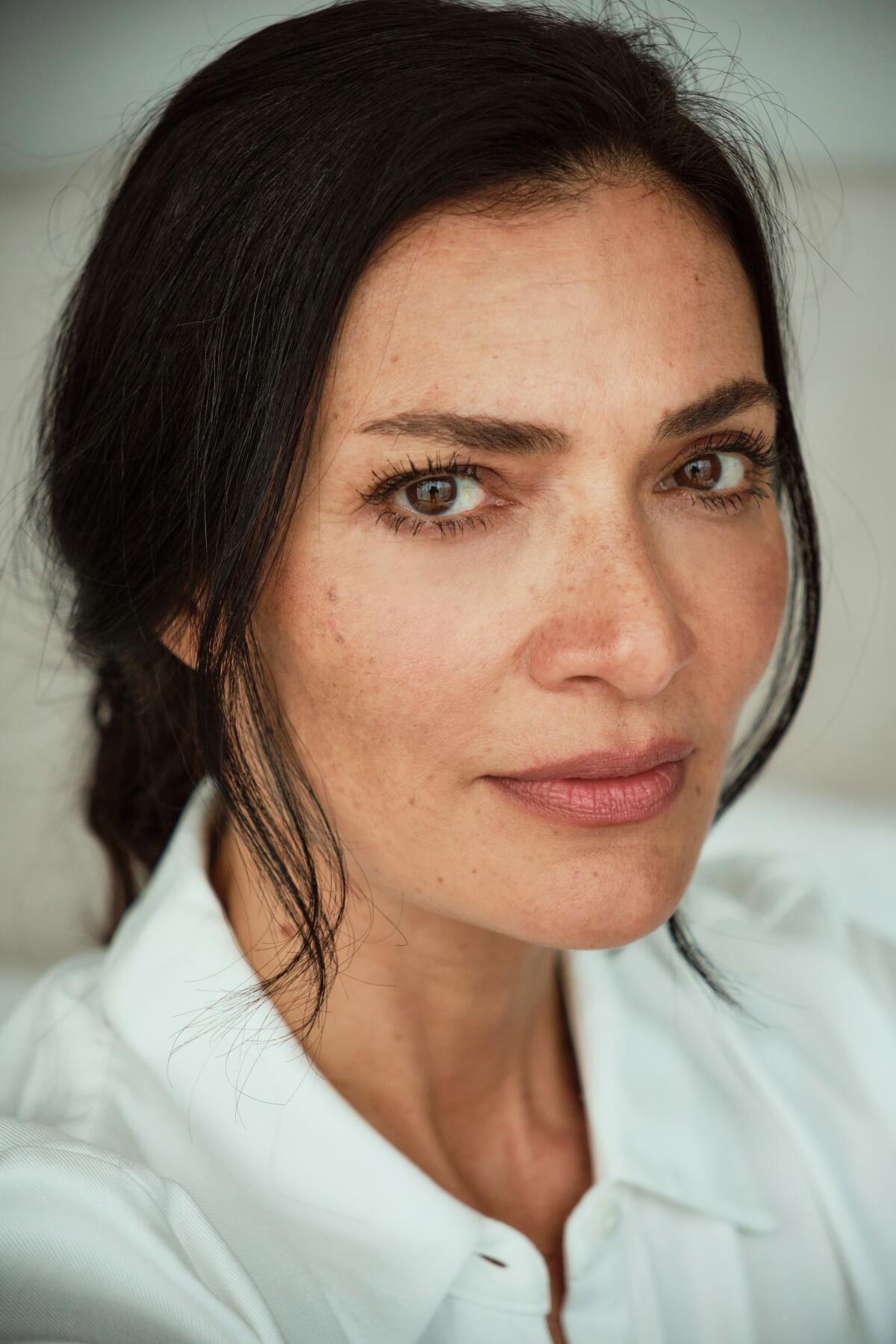
Ana María Orozco, who starred in “Yo Soy Betty, la Fea,” in Miami this month. The actor is reprising her role for Prime Video’s “Betty, la Fea: The Story Continues.”
(Diego Armando Mendoza / For The Times)
Almost 25 years since it first aired, “Yo Soy Betty, la Fea” (I Am Ugly Betty) is getting a sequel that hopes to straddle a fine line between reverence and reinvention. Arriving Friday on Prime Video, “Betty, la Fea: La Historia Continúa” — quite literally “the story continues” — aims to recapture the essence of what made this Colombian telenovela a record-breaking global success and yet boldly embrace a changed world that will force its iconic protagonist to reckon with the happy ending written for her all those years ago.
On paper, Beatriz “Betty” Pinzón Solano, played by Ana María Orozco, was the kind of character telenovela audiences rarely saw at the center of such sweeping lovestruck narratives. Living up to the show’s title, she was openly derided as “fea”: ugly.
She sported greasy, wavy hair with bangs. She wore braces. She had red, thick-rimmed glasses. She wore dowdy skirts with equally drab cardigans. She boasted a hiccup-laden frog of a laugh. At Ecomoda, a Colombian fashion company that prided itself on exalting beauty and style, this lowly secretary was an odd duck. An ugly duckling, even. Add in the fact that she was smitten with the company’s CEO, the cocky playboy Armando (Jorge Enrique Abello), and you had the making of a rather modern telenovela lead.
Created and written by Fernando Gaitán, who had penned the crossover success “Café con Aroma de Mujer” a few years earlier, “Yo Soy Betty, la Fea” was, in 1999, a radical proposition. Mixing the trappings of a broad screwball comedy with the strictures of a traditional telenovela, Gaitán turned that genre on its head, creating a protagonist and an ensemble of characters (including an openly gay designer, a cadre of fellow “ugly” secretaries and conniving privileged execs) unlike any that had come before.
“It was almost like an X-ray of society at the time,” Orozco tells The Times over the phone in Spanish. “There was a humanity in his characters that helped it feel universal. He was a great observer of the world and I think he managed to capture the essence of something that you didn’t really tackle in traditional telenovelas. And he threaded it with humor, which allowed him to go places you wouldn’t normally go.”
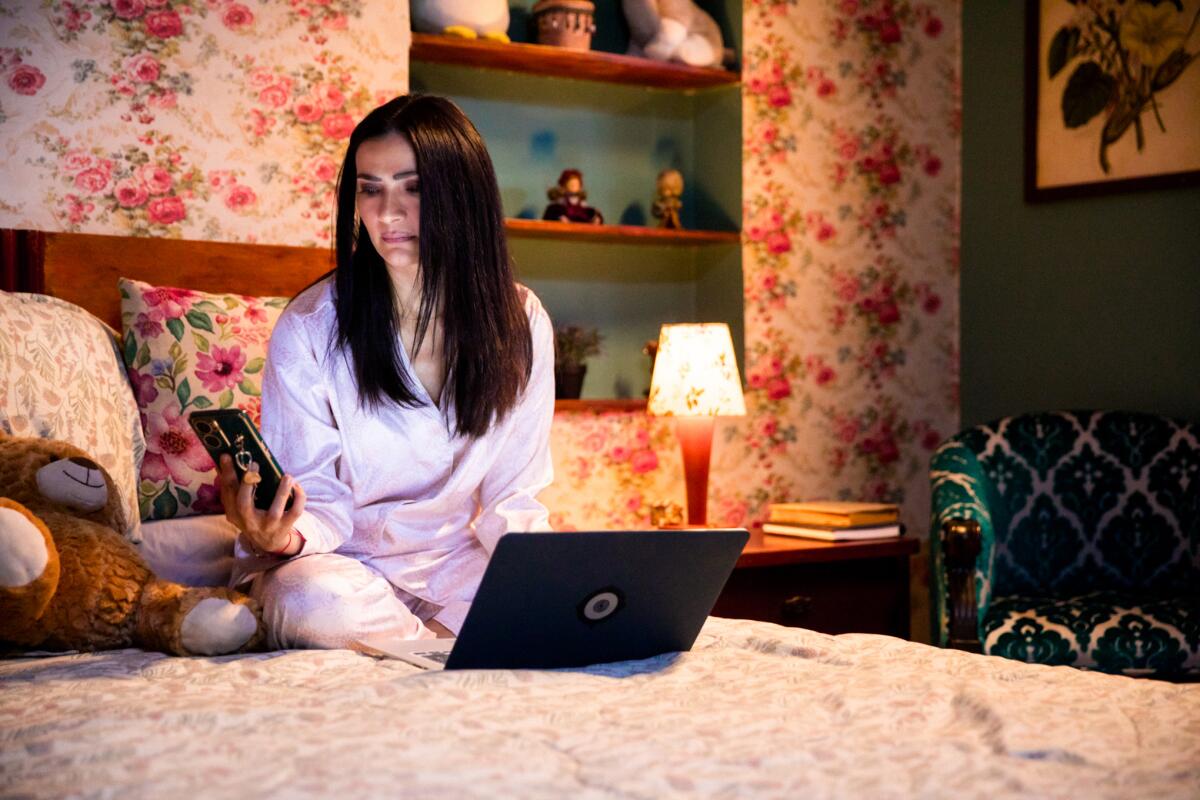
Ana María Orozco as Betty in a scene from “Betty, la Fea: The Story Continues.”
(Ana Maria Toro Chacon)
Due in no small part to Orozco’s winning, textured performance, Betty was both cartoonish and grounded. She was equally at home in a slapstick comedy as she was in a romantic melodrama. But she was inimitably herself. She was intelligent, ambitious, driven, and — for much of the series — unconcerned with how others saw her. Moreover, she was neither a pitiful fool nor a mere laughingstock. She was the lead, after all. And audiences, it turned out, were famished for such a protagonist.
The series, which aired nightly on weekdays, was a hit in Colombia for RCN network, which produced and aired it. If you grew up in Bogota at the time, as I did, “Yo Soy Betty, la Fea” was inescapable. It was the epitome of water cooler television. At the height of its success, an episode could nab close to 70% of Colombian TV viewership (roughly 25 million viewers). RCN even aired episodes on the radio because many commuters driving home didn’t want to miss a single second of the story. In 2000, Semana, the country’s most prestigious magazine, named Betty “Character of the Year.” The series and actress alike swept every award they were nominated for.
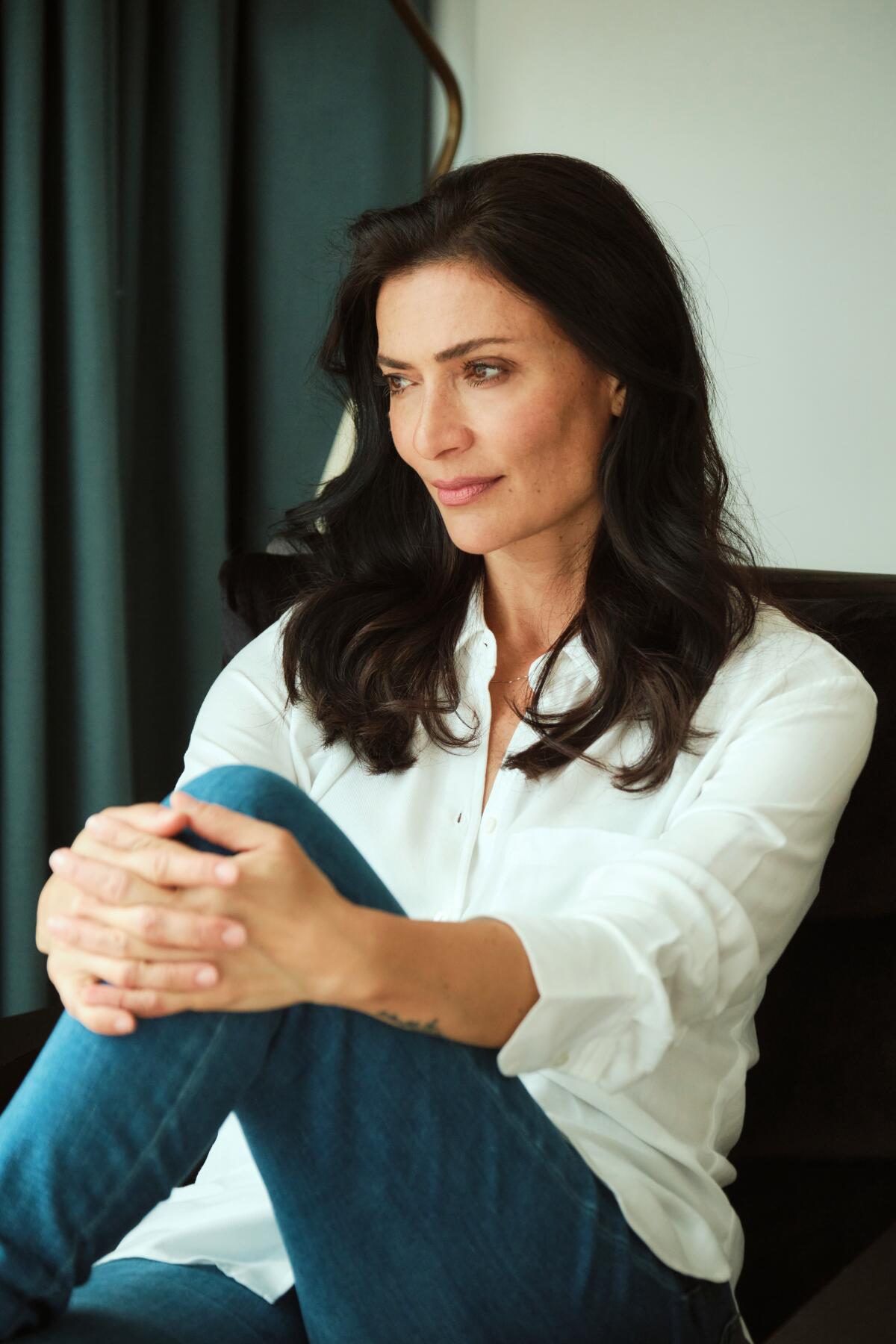
Ana María Orozco on “Yo Soy Betty, la Fea” creator Fernando Gaitán: “There was a humanity in his characters that helped it feel universal.”
(Diego Armando Mendoza / For The Times)
Betty was a phenomenon at home. Soon enough, though, the telenovela was licensed to air all over the world, gaining fans by the millions with every new broadcast, and that’s continued as the series has become available to stream. After ending its run in 2001, it has also found new audiences through a spinoff, an animated series, more than 20 global remakes — including ABC’s version, “Ugly Betty” — and a 2017 stage production that starred the entire original cast.
For Orozco, who was 27 when the show ended after 335 episodes, the success was dizzying.
“When we stopped shooting, I was a bit taken by it all,” she says. “I was also exhausted. We’d been working 18 hour days, six days a week for almost two years. And I was afraid. Like, what do I do with myself? Everyone wanted Betty but I wanted more. I wanted an acting career. But that feeling eventually dissipated.”
Now, ahead of the premiere of “Betty, la Fea: La Historia Continúa,” Orozco is at ease with revisiting her most famous creation. And she’s given herself license to embrace Betty’s iconic trappings all while lending them a modern twist. This is the Betty we all know and love, yet Orozco is ushering the character into a brave new world.
As fans of the original telenovela will notice, advertisements for the new series show Orozco sporting Betty’s signature red spectacles and wavy bangs. Gone is the swanlike creature who eventually wooed Armando with her flattened hair, frameless glasses, and pastel-colored ensembles. For Marta Betoldi, the writer who developed the series alongside Juan Carlos Pérez and César Betancur, this is the key to what makes revisiting Betty in 2024 so exciting.
“It’s not exactly the same Betty,” the Argentine writer tells The Times over Zoom in Spanish. “But she is herself, still. That same woman. But 20 years have gone by. She’s a mother now. She’s spent two decades with Armando, with that kind of man. She’s seen #MeToo happen and gone through that same kind of awakening as a lot of us went through that had us reassess our own intimacies and relationships. I thought Betty deserved that shift.”
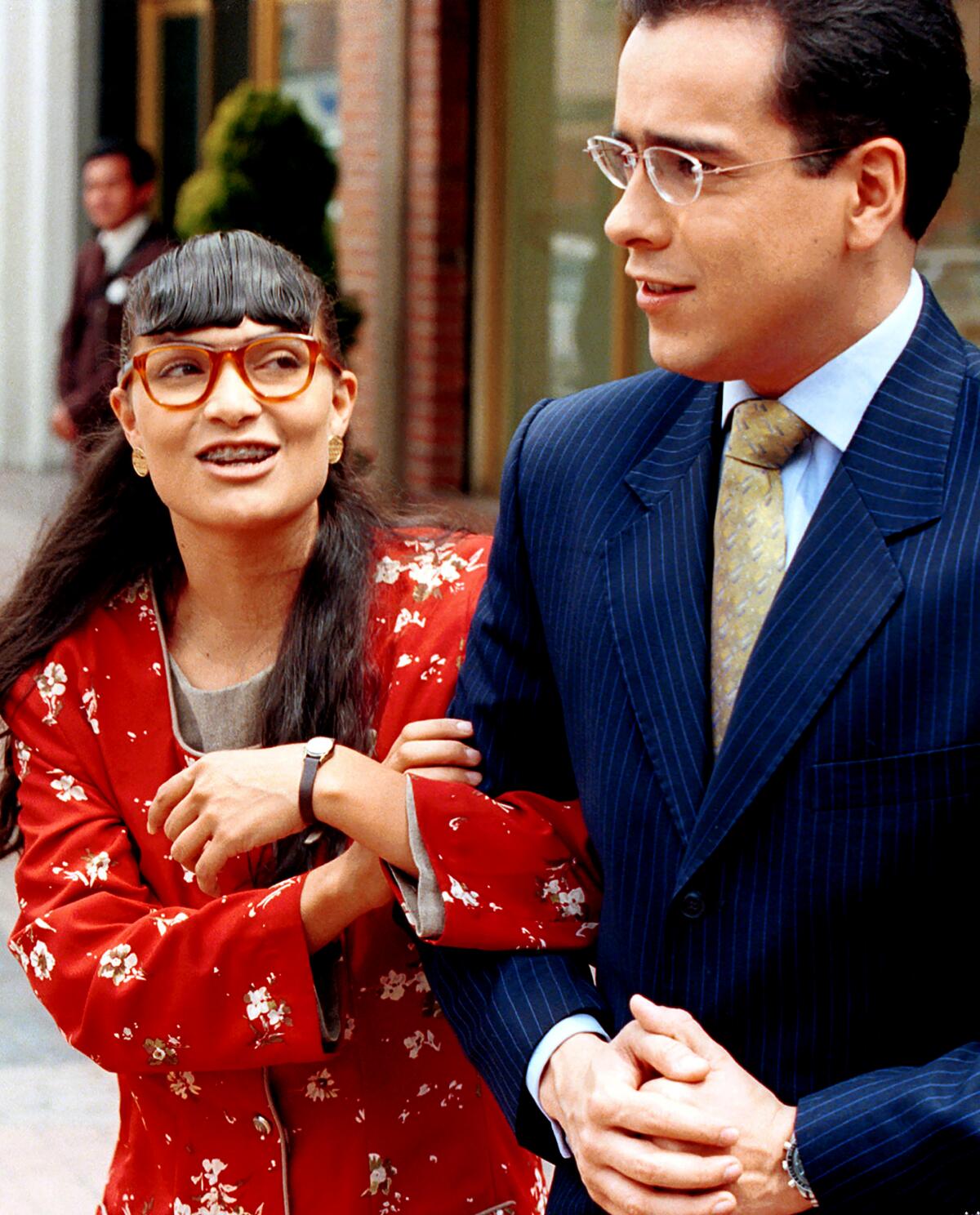
Ana María Orozco as Betty in the original Colombian telenovela “Yo Soy Betty, la Fea” with Jorge Enrique Abello, who plays Armando.
(Ricardo Mazalan / Associated Press)
For Betoldi and Orozco, this new series was a way to give Betty a chance to find herself anew. The setting remains the same; this is still a workplace comedy at a fashion house, after all. And the bulk of the original cast is back, including Julian Arango, reprising his role as Hugo, the shrill, limp-wristed designer who still enjoys tormenting Betty, and Natalia Ramírez as Marcela, who was Armando’s one-time fiancee and is now an enterprising, if not outright conniving, Ecomoda shareholder.
But Betty is adrift in this familiar world. When we meet her now, she’s in the middle of a divorce with Armando, and has stepped down from leading Ecomoda, which as before, is in jeopardy. She finds it hard to connect with her grown-up (and stuck-up) daughter. In essence, the happily-ever-after that had characterized the finale back in 2001 has been handily undone.
Such unraveling is designed not as a way to erase what Gaitán, who died in 2019, had done but a way to live up to the spirit of what he’d created.
“If Gaitán hadn’t written her with such elasticity, as such a three-dimensional character, we wouldn’t have been able to write her with such ease in 2024,” Betoldi says. “In a way she feels better suited for this moment.”
“Nowadays I find it quite interesting to revisit Betty,” Orozco adds. “I mean, I’m older. Betty’s older. And it was interesting to tell a story that felt contemporary. Not to do a remake. Or to go back to a vision of the past or to just repeat what we’d done already. For me that was key: to do something different without losing the core of who Betty was.”
Orozco welcomed the challenge — especially when it came time to update Betty’s look for 2024. In a key scene from the new series’ first episode, we get to see a collision of two Bettys. Standing in her old bedroom at her father’s house, Betty finds herself rereading her old diary entries about her early days at Ecomoda. These are flashbacks lifted straight from the original telenovela, with Orozco’s youthful voice guiding us through the shift in aspect ratios that bridge the past and the present. As she’s looking back, present-day Betty decides to do something radical. On a whim, she cuts off her hair, puts her thick-rimmed glasses back on, and dusts off her old wardrobe.
“There’s something symbolic about returning to that look,” Orozco adds. “It’s about getting to know herself again.”
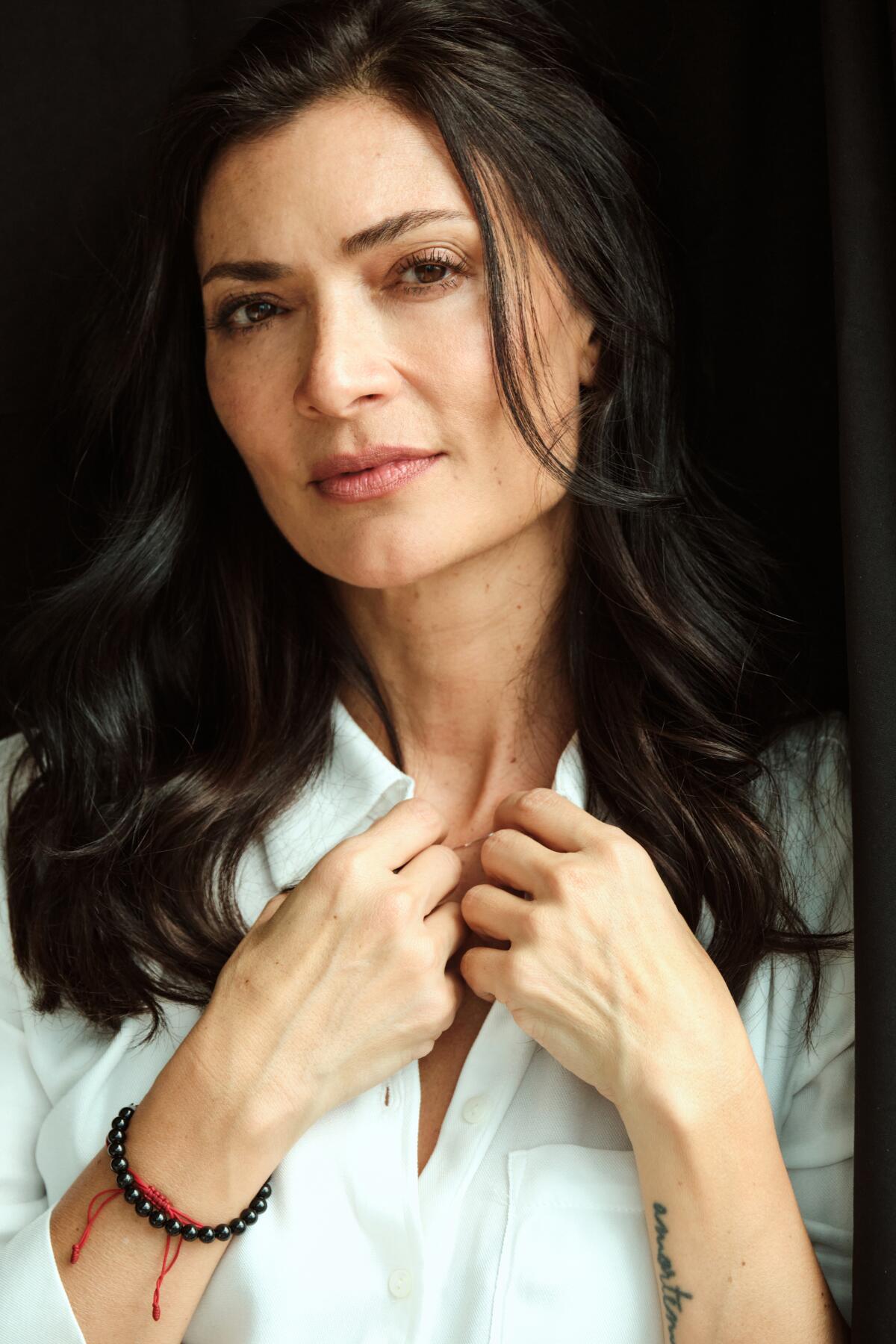
Ana María Orozco on returning to play Betty: “I’m older. Betty’s older. And it was interesting to tell a story that felt contemporary.”
(Diego Armando Mendoza / For The Times)
That may have been the easiest part of the project. The world has finally, perhaps, caught up to Betty and all she stood for. Everything that made her “fea” all those years ago — her outfits, her accessories, her natural hair — are things that are not looked down upon so much anymore. Some are even prized. When Betty’s 20-something daughter, a hip would-be designer, first sees Betty sporting the old look, she doesn’t call her mother ugly. Instead she calls Betty out for wanting to pass as a hipster.
The return of that iconic Betty will hopefully feel as emboldening for fans as it did for Orozco, who proves once more that she can unearth a soulful sensibility from within a character who’s long felt larger than life.
“I’ve never competed with Betty,” Orozco jokes. “Because she’s so big and unique. She’s so special, and quite rare in an actor’s career, I know that much. These days we’re quite good friends. She’s been with me through a lot. She has taught me plenty. And it’s all been quite lovely.”
In Spanish, her line feels more fitting. Orozco turns to a phrase that’s the opposite of how Betty is described, even in this new series. It’s all been “muy lindo,” she says. Cute. Pretty. Beautiful, even.
